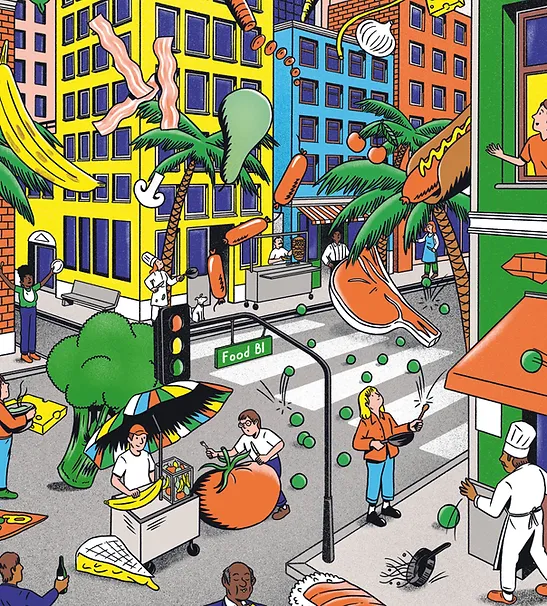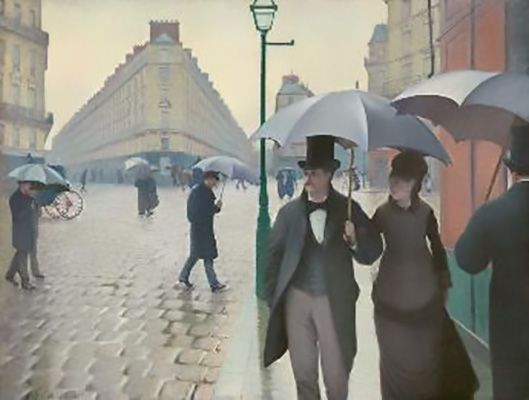Non-Western Blog
Gyotaku - Japan
Gyotaku is a type of Japanese art that dates back to the mid 1800s and is still practiced today. It is a type of art used by fisherman to make a print of the fish they catch with ink and special paper. "Anglers would keep a supply of rice paper, sumi ink, and brushes on their boats so that they could make ink etchings of their freshly caught fish; the prints were so accurate that they were often used to determine the winners of fishing contests in Japan." (“Gyotaku: The Traditional Japanese Art of Painting Marine Life with Actual Fish”). It used to just be to record the sizes but as you'll see it has evolved into much more. Japan is known for its many forms of art and definitely has some very popular ones. This one caught my eye however as it uses real fish to make the art and that is very interesting to me. Using nature as a tool is something that I find myself always enjoying when I see it. Although gyotaku started simply as a one colored imprint it has now evolved into colorful scenes of undersea life. I hope you enjoy these works and find them as interesting as I do.
This would be considered a more traditionally practiced gyotaku. Although I could not find too much information on this piece it is a great example of the simple beginnings of gyotaku. This piece is dated February, 2013 and is titled Longfin Tuna by Liz Van Der Bug. Although it is not bright and colorful the detail from it is very cool. Looking at how the the ink actually imprints the fish perfectly is quite intriguing.
This is a piece by Naoki Hayashi is titled A Parrotfish. Although I can not find the exact date of this work we can assume its been made in the last 20 years. Hayashi is a full time gyotaku artist and has been make the art his whole life. Here we see how his work has evolved in to more than just a black imprint of a fish. Vibrant colors are added to make the gyotaku standout and more real. The imprint of the fish comes to life with the addition of its natural colors. Atlas Obscura wrote "First used as a handy way to document the size and shape of a fish, gyotaku has since evolved into a genre of scientific illustration, an educational tool, and a modern art form." (Imbler). Here we see how it evolves into modern art.
This piece is called The Circle of Life by Heather Fortner, 2010. From what I've seen with
Fortners work is that it has come to the point where this artform has fully evolved. Yes she is doing the traditionally practiced fish print, but she adds color and a scene to bring it all together. She takes this practice to the next level creating beautiful setting as she does in the piece above. I will also be adding two more works of hers under this that I could not find a title or date for. My Modern Net made an article about Fortner and many of her works stating " Artists like Fortner then paint in the eyes and surrounding details to create lifelike underwater scenes." (“Gyotaku: The Traditional Japanese Art of Painting Marine Life with Actual Fish”). Her work is colorful, detailed, and comes alive and that is what attracts me to it.
References:
“Gyotaku: The Traditional Japanese Art of Painting Marine Life with Actual Fish.” My Modern Met, 2 Sept. 2015, mymodernmet.com/heather-fortner-gyotaku/.
Imbler, Sabrina. “How the Traditional Japanese Art of Fish Printing Inspired a Modern Art Form.” Atlas Obscura, 26 June 2019, www.atlasobscura.com/articles/gyotaku-japanese-fish-printing.
Itil'ka. “Gyotaku - Поиск в Google | Gyotaku, Japan Art, Fish Art.” Pinterest, 2013, www.pinterest.com/pin/776096948260642987/. Accessed 30 Apr. 2023.








Hello Matt,
ReplyDeleteI really loved your post, all of these pieces were very beautiful to me and I love how colorful most of them are. I specifically found Heather Fortner's art works to be particularly eye-catching and I love The Circle of Life one the most, the cool and soft toned colors make the piece very appealing and easy on the eye. I found it interesting that these prints were used to determine who one fishing contests were, I never knew that this was a thing before! I wonder if there are similar things that people have done with other things they have caught or otherwise made prints with, I would love to see something with flowers or something similar to that.
Hi Matt, this is a fantastic post. I really like how colorful some of these works are. But the artwork that I find most appealing has to be Naoki Hayashi's Parrotfish. I enjoy the colors that were used in this work in particular. Hayashi's Parrotfish reflects the ongoing evolution of the Gyotaku tradition and demonstrates how contemporary artists continue to be inspired by and engaged with this rich and vibrant art form. Like Gyotaku, Parrotfish is a print that depicts a fish in intricate detail, including its scales, fins, and other features. However, unlike traditional Gyotaku prints, which are made by pressing paper directly onto the inked fish, Parrotfish is a multi-colored woodblock print that is created by layering different colors of ink onto a carved wooden block and then printing the image onto paper. Overall, I have to say that you have done well in presenting your blogs for this course. I wish you the best for whatever comes next.
ReplyDeleteMatt, great post. This is my first time learing about Gyotaku. It was interesting to see how traditional forms of art can evolve into modern art forms. I would own a piece of art in this style and would enjoy a brightly colored print like the the Long Fin Tune piece you shared.
ReplyDeleteHi Matt, I love the pieces you chose!! Japanese art is so beautiful. I really enjoy the style and the color pallets. I enjoyed reading your post and learning your perspective on the artists and their work. Out of all the pieces you chose my favorite was Longfin Tuna. I really love the black and white contrast and your discussion was really insightful. Thank you for sharing!
ReplyDelete